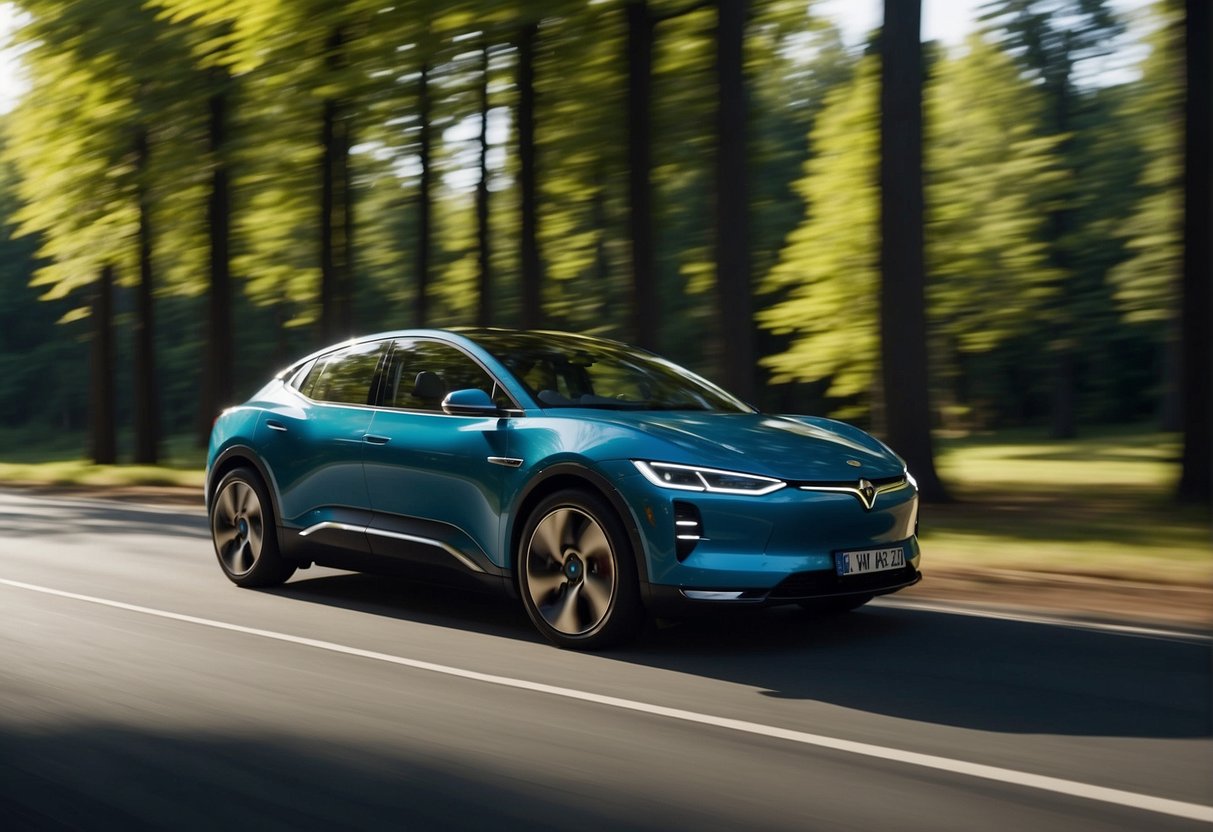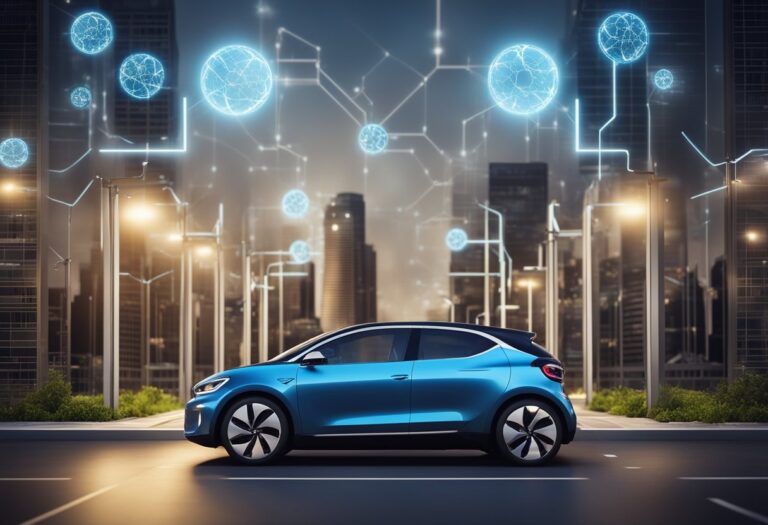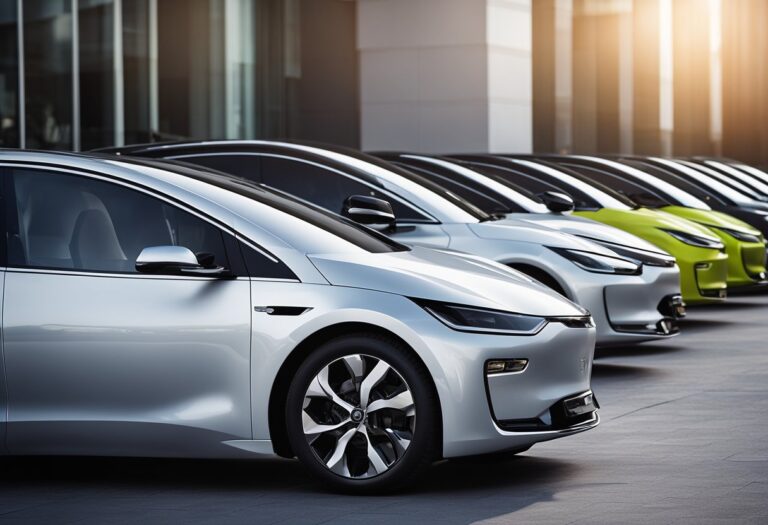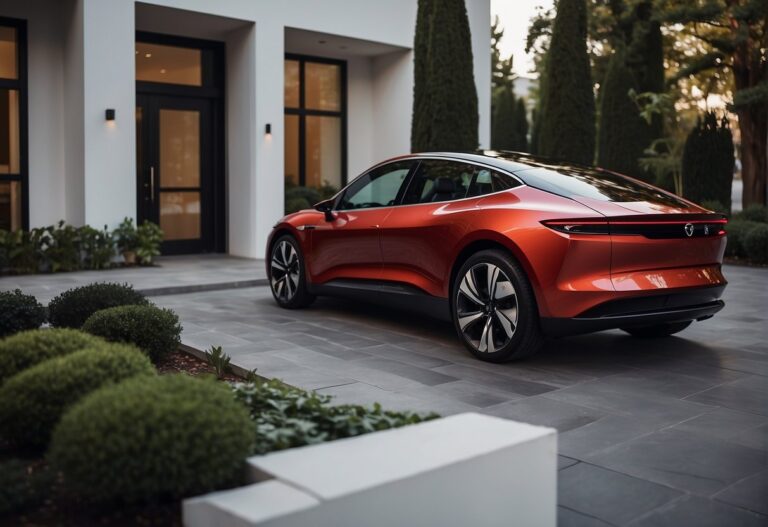Eco-driving techniques for electric vehicle owners are becoming increasingly popular as people look for ways to reduce their carbon footprint and save money on fuel costs. Eco-driving involves adopting a number of smooth and safe driving techniques that can save fuel, electric vehicle battery charge, and materials. These techniques can also lead to a reduction in the frequency of collisions and serious injuries.
One of the key benefits of eco-driving is that it can help electric vehicle owners to get the most out of their battery charge. With the right driving techniques, it is possible to extend the range of an electric vehicle by up to 20%. This means that drivers can travel further on a single charge, reducing the need for frequent recharging and saving money on electricity costs.
There are a number of eco-driving techniques that electric vehicle owners can adopt to improve their energy efficiency. These include driving at a steady speed, avoiding rapid acceleration and heavy braking, and anticipating traffic flow to reduce the need for sudden stops and starts. By following these simple tips, electric vehicle owners can enjoy a more sustainable and cost-effective driving experience.
Fundamentals of Eco-Driving for EV Owners
Understanding Eco-Driving and Its Importance
Eco-driving is a set of driving techniques that help drivers reduce energy consumption and increase fuel efficiency. It involves adopting a number of smooth and safe driving behaviors, such as maintaining a steady speed, avoiding sudden acceleration or braking, and anticipating traffic flow. Eco-driving is particularly important for electric vehicle (EV) owners, as it helps them maximize their vehicle’s range and battery life.
Comparing EVs and Traditional Vehicles
Compared to traditional vehicles, EVs have unique characteristics that require different driving behaviors. For example, EVs rely on regenerative braking to recharge their batteries, which means that drivers can recapture some of the energy that would otherwise be lost during braking. Additionally, EVs tend to have a higher initial cost than traditional vehicles, which means that maximizing their efficiency is even more important.
Key Eco-Driving Techniques for Energy Management
There are several key eco-driving techniques that EV owners can use to manage their vehicle’s energy consumption. These include:
- Maintaining a steady speed: Driving at a steady speed helps reduce energy consumption by avoiding unnecessary acceleration and braking.
- Anticipating traffic flow: Anticipating traffic flow can help drivers avoid sudden stops and starts, which can waste energy.
- Using regenerative braking: Regenerative braking allows drivers to recapture some of the energy that would otherwise be lost during braking, which can help extend the vehicle’s range.
- Minimizing use of air conditioning and heating: Using air conditioning and heating can significantly impact a vehicle’s range, so it’s important to use them sparingly.
- Planning routes: Planning routes in advance can help drivers avoid traffic congestion and other obstacles, which can help reduce energy consumption.
By adopting these eco-driving techniques, EV owners can maximize their vehicle’s efficiency and range, while also reducing their environmental impact.
Advanced Eco-Driving Strategies and Technologies
Optimizing Energy Efficiency Through Driving Scenarios
One of the most effective ways to optimize energy efficiency in electric vehicles (EVs) is to adopt an eco-driving strategy. An eco-driving strategy involves driving in a manner that minimizes energy consumption while maintaining a safe and comfortable driving experience. To achieve this, EV drivers need to be aware of different driving scenarios and how they affect energy consumption.
For instance, driving on a highway at a constant speed is more energy-efficient than driving in stop-and-go traffic. Similarly, driving downhill and regenerative braking can help recharge the battery, while accelerating uphill consumes more energy. By understanding these scenarios, EV drivers can adjust their driving behavior to optimize energy efficiency and extend the range of their vehicle.
Leveraging Technology for Eco-Driving
New technologies and energy management strategies are emerging to help EV drivers optimize energy efficiency. For example, optimal control algorithms can be used to calculate the most energy-efficient route and speed for a given trip. This approach takes into account factors such as traffic, road conditions, and the vehicle’s battery state-of-charge (SOC).
Reinforcement learning is another technology that can be used to optimize energy efficiency. This approach involves training an artificial intelligence (AI) agent to learn the optimal driving behavior for a given scenario. The agent receives feedback on its performance and adjusts its behavior accordingly, leading to more energy-efficient driving.
Another technology that can help optimize energy efficiency is the regenerative braking system. This system converts the kinetic energy of the vehicle into electrical energy during braking, which can be used to recharge the battery. By reducing the need for external charging, regenerative braking can help extend the range of an EV.
Future Perspectives on Eco-Driving Research
Eco-driving research is an active area of research, with many ongoing projects aimed at developing new strategies and technologies to optimize energy efficiency in EVs. The National Natural Science Foundation of China, for example, is funding research into the development of advanced eco-driving strategies for EVs.
Future research in this area is likely to focus on developing more sophisticated algorithms for optimal control and reinforcement learning. Additionally, new technologies such as vehicle-to-grid (V2G) systems may emerge, which allow EVs to sell excess energy back to the grid, further optimizing energy efficiency.
Overall, eco-driving strategies and technologies offer a promising way to optimize energy efficiency in EVs and extend their range. By adopting these strategies and leveraging new technologies, EV drivers can reduce their environmental impact and save money on fuel costs.
Frequently Asked Questions
What are the top eco-driving strategies to maximize an electric vehicle’s range?
The top eco-driving strategies to maximize an electric vehicle’s range include accelerating and decelerating smoothly, maintaining a consistent speed, and avoiding sudden stops. Additionally, it is important to minimize the use of air conditioning and other power-consuming features, and to plan routes that avoid traffic congestion and steep hills.
How does eco mode affect the performance and efficiency of an electric car?
Eco mode is a feature that optimizes the performance and efficiency of an electric car by reducing power consumption. This is achieved by limiting the output of the motor and reducing the use of power-consuming features, such as air conditioning and heating. While this can reduce the car’s acceleration and top speed, it can also significantly increase the car’s range.
What are the best practices for using regenerative braking to conserve energy in an EV?
Regenerative braking is a feature that allows an electric car to recover energy when braking. The best practices for using regenerative braking to conserve energy in an EV include anticipating stops and using the brake pedal gently to maximize the amount of energy recovered. Additionally, it is important to avoid excessive braking, which can reduce the effectiveness of regenerative braking.
Can eco-driving training significantly improve energy efficiency in electric vehicles?
Yes, eco-driving training can significantly improve energy efficiency in electric vehicles by teaching drivers how to adopt eco-friendly driving behaviors. This can include techniques such as smooth acceleration and deceleration, maintaining a consistent speed, and minimizing the use of power-consuming features. By adopting these behaviors, drivers can maximize the range of their electric vehicles and reduce their energy consumption.
What are the main benefits of adopting eco-driving habits for electric vehicle owners?
The main benefits of adopting eco-driving habits for electric vehicle owners include maximizing the range of their vehicles, reducing their energy consumption, and minimizing their environmental impact. Additionally, eco-driving can help to reduce wear and tear on the vehicle and improve overall driving safety.
Is it more energy-efficient to use eco mode in an EV during city driving or highway driving?
It is generally more energy-efficient to use eco mode in an EV during city driving, as this typically involves more frequent stops and starts, which can benefit from the reduced power consumption of eco mode. However, eco mode can also be effective during highway driving, particularly if the driver maintains a consistent speed and avoids sudden acceleration or deceleration. Ultimately, the most effective use of eco mode will depend on the specific driving conditions and habits of the driver.



